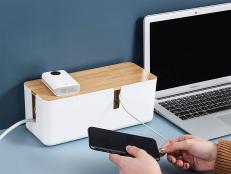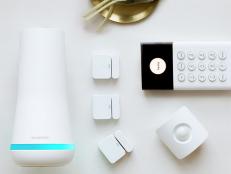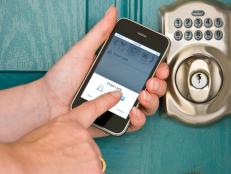Home Automation Design and Installation

Home automation design and installation can run the gamut from extremely simple, DIY projects to highly complex systems that require expert-level knowledge of electrical engineering and computer software and hardware. Depending on your home automation needs, you may be able to set up a simple home automation system on your own, or you may decide to choose from a number of manufacturers for individual home automation systems or whole-house systems.
Before you decide on the way forward, you'll want to choose which features of home automation are most important to you. In general, the primary categories of home automation are security, HVAC (heating and air conditioning), energy usage monitoring and control, lighting, entertainment, and outdoor sprinkler systems. For homeowners who are interested in controlling all of a home's systems, many manufacturers now offer products that connect to a home's electrical grid and wireless network and control all of these systems via an in-home hub and, in many cases, a digital dashboard accessible via computers and wireless devices from anywhere with an internet connection.
The simplest home automation design and installation approach is to use plug-in automation control. This design involves small control hub boxes that plug into wall sockets and then communicate with appliances and lighting to determine when they'll turn on and off. Homeowners can also control entire rooms or areas of the home via these hubs using a remote control, and in some cases, the boxes can pair with a home's wireless network and be controlled and programmed via a computer, smartphone or other wireless device.
Similarly, smart thermostats are in-home hubs for automated control of the home's heating and air conditioning. They can be programmed by homeowners to operate the HVAC systems at opportune times, reduce or increase temperatures on a set schedule, and even communicate with power companies to provide energy usage information, which can then be relayed back to the consumer with recommendations for efficient use of appliances and heating and air conditioning systems.
Finally, whole-home automation systems are the most complex and difficult to design and install, but they may also provide the greatest benefits in terms of efficiency, cost and energy savings, and convenience. Modern whole-house automation systems almost exclusively operate by connecting to a home's electrical grid and wireless network, allowing the homeowner to control all of the home's systems via computer or wireless device, at the click of a mouse, or the tap of a finger from anywhere in the world with an internet connection.
Whole-home systems are generally designed and installed by companies that manufacture and sell home automation systems, but a growing number of DIY home automation enthusiasts have begun to design and install their own systems. It's important to note that complex home automation installations almost always require expert knowledge of electrical engineering and computer software and hardware. Those homeowners with the desire and technical chops to take on a whole home automation system will find a treasure trove of information on the topic waiting for them, though—many in the DIY community have meticulously documented their automation projects on blogs and websites.
See Also: How to Plan a Home Control System













































